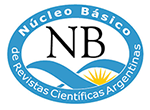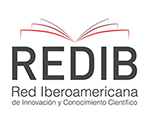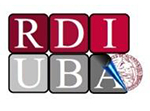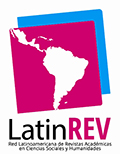Lista de comprobación para la preparación de envíos
Como parte del proceso de envío, los autores/as están obligados a comprobar que su envío cumpla todos los elementos que se muestran a continuación. Se devolverán a los autores/as aquellos envíos que no cumplan estas directrices.- La petición no ha sido publicada previamente, ni se ha presentado a otra revista (o se ha proporcionado una explicación en Comentarios al editor).
- El fichero enviado está en formato OpenOffice, Microsoft Word, RTF, o WordPerfect.
- Se han añadido direcciones web para las referencias donde ha sido posible.(exceptuando las direcciones URL);
- El texto cumple con los requisitos bibliográficos y de estilo indicados en las Normas para autoras/es, que se pueden encontrar en Acerca de la revista.
Aviso de derechos de autor/a
Aquellos autores/as que tengan publicaciones con esta revista, aceptan los términos siguientes:
- Los autores/as conservarán sus derechos de autor y garantizarán a la revista el derecho de primera publicación de su obra, el cual estará simultáneamente sujeto a la Licencia de reconocimiento de Creative Commons Attribution-NonCommercial 4.0 International (CC BY-NC 4.0) que permite a terceros copiar y redistribuir el material en cualquier medio o formato.
- Se permite y recomienda a los autores/as difundir su obra a través de Internet (p. ej.: en archivos telemáticos institucionales o en su página web) antes y durante el proceso de envío, lo cual puede producir intercambios interesantes y aumentar las citas de la obra publicada.
Bajo los siguientes términos, los usuarios están de acuerdo con:
- Atribución — Dar el crédito correspondiente, proveer el link de la licencia e indicar qué cambios fueron hechos.
- No comercial — No usar el material con fines comerciales.
 Contabilidad y Auditoría está bajo la licencia Creative Commons Attribution Non-Commercial 4.0 License. Permisos más allá de este alcance estarán disponibles en Contabilidad y Auditoría.
Contabilidad y Auditoría está bajo la licencia Creative Commons Attribution Non-Commercial 4.0 License. Permisos más allá de este alcance estarán disponibles en Contabilidad y Auditoría.
Declaración de privacidad
Los nombres y direcciones de correo-e introducidos en esta revista se usarán exclusivamente para los fines declarados por esta revista y no estarán disponibles para ningún otro propósito u otra persona.













